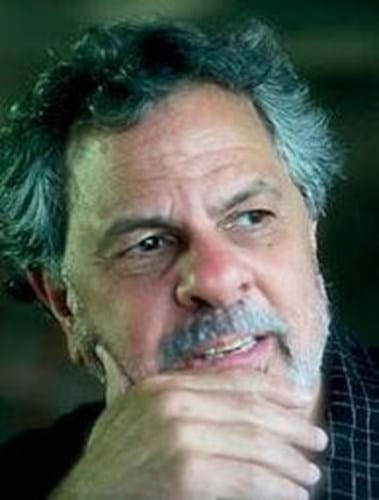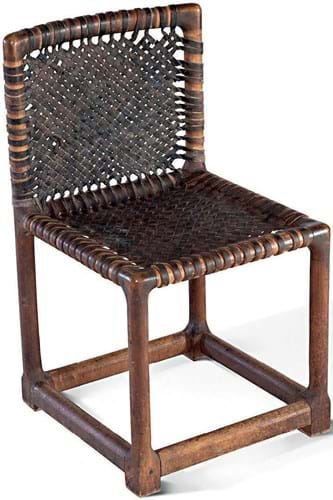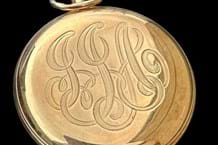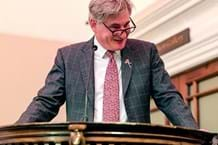
Dealer Bob Aibel of Moderne.
1 How did you get your start as a dealer?
I was a grad student in visual communication and film at University of Pennsylvania when I realised I was living in a community - rural Pennsylvania - where antiques were a major part of the lifestyle, not only aesthetically but as a form of social transmission. I made a film about the role of antiques in regard to memory and status. That’s where I started my journey towards becoming a dealer.
There wasn’t much to do in town, so I started going to auctions every weekend and became interested. Suddenly I realised I needed something to do with all of the stuff I’d bought. My cousin, who was a dealer, told me I should sell the antiques, and so I became a dealer. I opened my gallery in 1984, but continued teaching at Drexel University until 1992, staying around the Pennsylvania area.
My interests moved from folk art to French Art Deco. Also early on I relaunched the works of Nakashima (a 20th century American furniture designer). I realised that someone has to be responsible for reintroducing to the public important people who have been somewhat forgotten.
2 What is your area of focus?
Initially it was Americana in central Pennsylvania. Back in the 1970s and 80s it was all claw foot oak tables that were going out to the Midwest. Then it was folk art, a personal interest.
After that faded, the things I gravitated towards were unique, unusual pieces that carried a certain kind of originality. I started moving into the 20th century and realised French Art Deco was made just as well as 18th century American furniture - this blew up in popularity. Just before I left Drexel, I went to France to do a piece on the filmmaker Jean Rouch. While I was there, I bought tons of stuff.
When I returned to Pennsylvania, I rented a warehouse and opened it on the weekends to sell. The gallery started gaining a reputation, particularly with French Art Deco. I also focus on rediscovering the work of incredible yet mostly overlooked or forgotten artists such as Nakashima (see question 1). In 1995 the market really started rolling along and I began taking on other studio artists.
In 1996 I did a show on Wharton Esherick, something nobody had done since his retrospective in 1959 at the Academy. People had lost track of him - it was a great opportunity for us to revive something.
I enjoyed picking out work by people who clearly had a very original approach even if it was not appreciated or understood by the original audience. That is one of the standards I hold artists to: is this derivative or really something original?
3 One item you couldn’t do without?
Wood. I love wood so much - it has such infinite varieties and you never know what you’re going to get.
4 What projects have you worked on recently?
The Philadelphia Show is our main focus right now. We will showcase the remarkable works of Pennsylvania artists and designers, offering a glimpse into the region’s rich and prolific history. It will centre on the legacies of artists such as Wharton Esherick, George Nakashima, Daniel Jackson, William Daley, Rudy Staffel and Emil Milan, while also featuring some Contemporary talents such as Ashley Joseph Martin and Caprice Pierucci.
5 Real ale or espresso martini?
Real ale.















